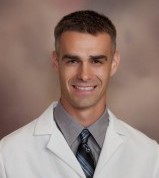Often times, when a joint has been painful for a significant amount of time (a few months to years), anti-inflammatory medications such as ibuprofen are not enough to provide adequate pain relief to allow rehab through physical therapy or home exercises.
How Joint Injections Work
 In these situations, it is often very beneficial to inject the joint with a steroid (what people often refer to as cortisone – the strongest anti-inflammatory medications we have) mixed with some anesthetic (numbing medicine) to provide a significant decrease to inflammation and pain. As a bonus, the improvement is felt within just a few minutes.
In these situations, it is often very beneficial to inject the joint with a steroid (what people often refer to as cortisone – the strongest anti-inflammatory medications we have) mixed with some anesthetic (numbing medicine) to provide a significant decrease to inflammation and pain. As a bonus, the improvement is felt within just a few minutes.
The reason the pain feels so much better so quickly is the anesthetic. The reason for this is that the physician or surgeon is often using the injection both for treatment of a condition as well as to assist in diagnosis. By mixing the anesthetic with the steroid, we can put both of them together into the area injected which allows us to determine if it will be beneficial within 5 minutes as it only usually takes a few minutes for the anesthetic to work.
If symptoms dramatically improve within that short period of time, we can say that the steroid injection itself was a good idea because where the anesthetic goes, so does the steroid. This is very useful in diagnosing conditions as well because it will either confirm what the physician suspects or start the evaluation down a different path.
Unfortunately, the anesthetic will wear off in 2-8 hours depending on what anesthetic is used. Some of that pain will return, but by 24-48 hours later the anti-inflammatory properties of the steroid will be effective and will likely diminish pain to approximately 50% of that experienced prior to the injection. This allows maximum improvement from physical therapy as activity is far less hindered by pain.
Interested in joint injections? Schedule an appointment with Dr. McHugh by calling his office in Western Branch at (757) 686-5673!
Jason M. McHugh, DO, CAQSM is board certified in Family Medicine and Osteopathic Manipulation with a Certificate of Added Qualification in Primary Care Sports Medicine from the American Osteopathic Board of Family Physicians. He received his bachelor of science in biology from the University of Michigan in Flint, Mich. He earned a doctoral degree in osteopathic medicine from Michigan State University College of Osteopathic Medicine in East Lansing, Mich., and completed a residency in family medicine at the Genesys Regional Medical Center in Grand Blanc, Mich. Dr. McHugh did his fellowship in primary care sports medicine at Michigan State University/Sparrow Hospital in East Lansing.
He currently serves as a medical director for Bon Secours Sports Medicine and In Motion Physical Therapy and Sports Performance. His duties include providing care and event coverage to local high school athletes as well as providing medical coverage and oversight to local mass participation events in the Hampton Roads area.



